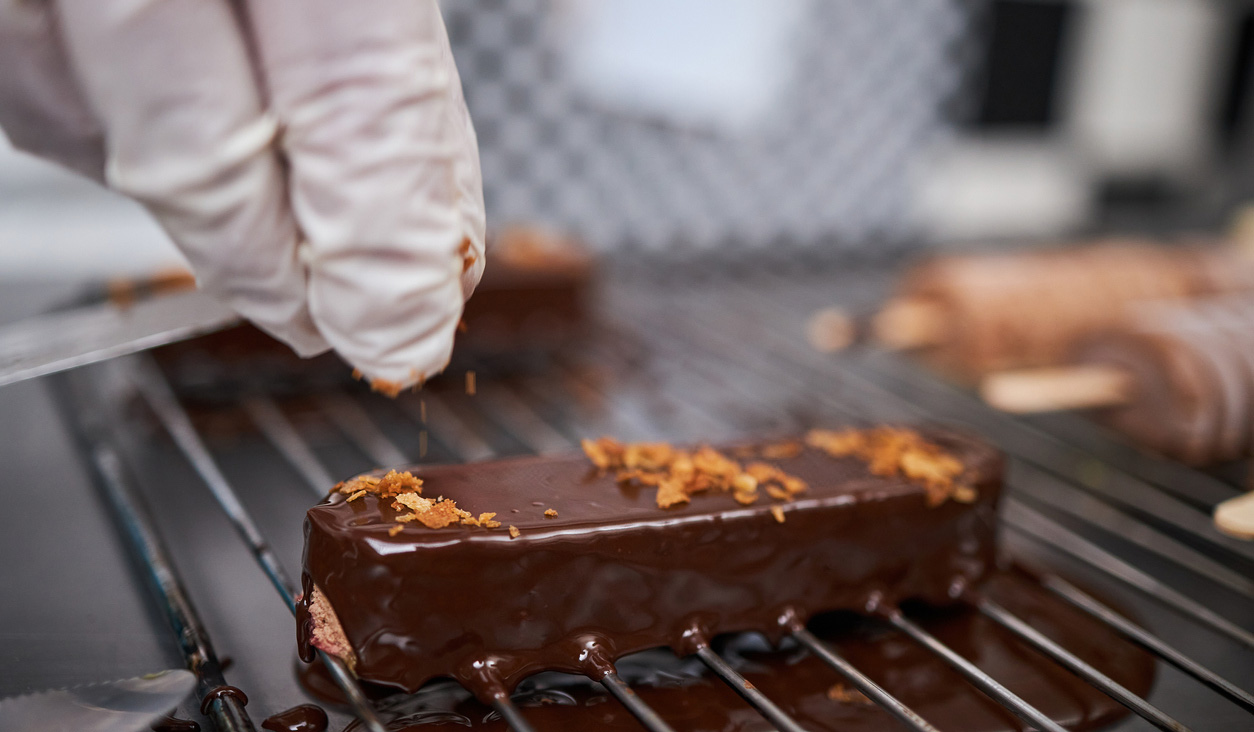Cleaning Tips To Prevent Allergen Cross-Contact Issues
Preventing allergen cross-contact issues in your food and beverage manufacturing facility requires several well-implemented strategies. Effective cleaning is one of these important strategies — most notably, preventing contamination of raw materials, products, and equipment.
As allergens constitute one of the leading causes of food recalls, food safety managers must conduct proper allergen management and prevention by thoroughly cleaning equipment to remove allergen residue.
The best cleaning programs consider allergens on the production line, in storage, during changeover in production schedules, and in the prevention of accidental cross-contact through equipment cleanliness. Here are some key tips to help you ensure allergen cross-contact prevention.
Understanding Cross-Contact vs Cross-Contamination
The terms food cross-contact and food cross-contamination are sometimes mistakenly used interchangeably. In fact, they refer to two different types of issues, even though both can lead to a food recall.
Food cross-contact occurs when a food allergen is unintentionally transferred from a food containing an allergen to a food that does not contain the allergen. When cross-contact occurs, cooking does not reduce or eliminate the chances of an allergic reaction in the consumer.
Food cross-contamination occurs when a bacteria or virus is unintentionally transferred from one food product or surface to another. When cross-contamination happens, proper cooking of contaminated food may reduce or eliminate the chances of foodborne illness.
Tips for Allergen Cross-Contact Prevention
1. Starting Your Cleaning Process
A critical step in the cleaning process to prevent allergen cross-contact is to remove as much of the product residue from the equipment as possible prior to starting any in-depth cleaning. CIP systems use a pre-rinse to accomplish this. Among other benefits, removing the excess residue will speed up the cleaning process. It will also help prevent the accidental spreading of allergenic materials, especially when using compressed air or water to clean.
Next, scrub the equipment to break up any residue and biofilm. Do not use chemicals before scrubbing, as debris can only be removed by a mechanical action and not by chemicals alone. The agitation step of cleaning is critical to remove product residues, including those containing allergens.
Know your equipment’s “hot spots,” or the areas where product residue can build up, such as rollers, scrapers, elbows, tensioners, and product guides. Additionally, don’t forget to clean product belts, rollers, and other moving equipment, as they can also contain product residue.
It is not uncommon for the cleaning crew to clean the equipment only in the position in which it was stopped. The oversight of not repositioning equipment can lead to the crew missing spots. Make sure your cleaning procedures address this issue for full allergen cross-contact prevention.
2. Reducing and Removing Compressed Air and Water
If the equipment can be wet cleaned, rinsing thoroughly is crucial to remove all visible residues. Inexperienced cleaning crews might just spray some water on the equipment and start foaming or applying chemicals, but this method takes time and is ineffective.
If you must dry clean, your next step should be brushing and/or vacuuming, which helps reduce the spread of allergens. Compressed air should only be used as a last resort to help dry and clean inaccessible and difficult spots. Since compressed air can move debris, it is very important to control where and when it is used. A thorough inspection of the equipment and surrounding areas should take place afterward.
3. Cleaning Tools, Light, and Inspection
Cleaning tools are frequently forgotten during the cleaning process. Most cleaning processes use reusable brushes, scrapers, and tools, but food safety managers must follow-up to ensure they are cleaned afterward. Don’t forget to clean the utensil wash sinks and clean out-of-place (COP) tanks. Cross-contamination and allergen cross-contact can occur if cleaning tools are not properly maintained, so be sure the tools used for cleaning are part of your cleaning program. Another critical measure for preventing cross-contact is designating cleaning tools for cleaning after each specific type of allergen run. Color coding can be effective for this purpose.
Adequate lighting is also key to the cleaning process. Frequently, smaller parts from the production line are taken to a wash pit, COP tank, or wash sink, where lighting may be poor, making it difficult to see any remaining residue. Ensure those areas have good lighting to help successfully clean.
Lastly, complete a post-cleaning inspection. This process is best performed by someone other than the person who did the cleaning. The inspector should use a good flashlight and be familiar with the equipment’s hot spots where residue might accumulate. It is critical that the plant allows enough time to conduct a proper post-cleaning inspection. This allows for recleaning when needed before the line resumes production to prevent unplanned downtime.
Consistent Protection from Allergen Cross-Contact
Allergen testing should be conducted on cleaned equipment on a periodic basis. This can validate that the cleaning methods and their execution are effective in removing the allergen residue from the equipment. If the tests show that allergen residue remains, then the cleaning procedures and practices must be evaluated and modified to achieve the desired results.
To help your organization foster a consistent culture of cleanliness, use some of AIB International’s helpful resources like our Food Safety and Sanitation Online course — designed to help leaders master their food safety systems across their manufacturing process. With this education under your belt, your manufacturing business can confidently operate knowing your products — and, ultimately, your customers — are safe from harm.


